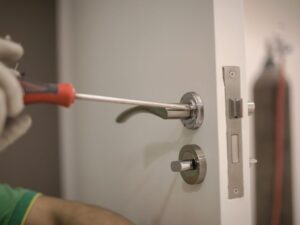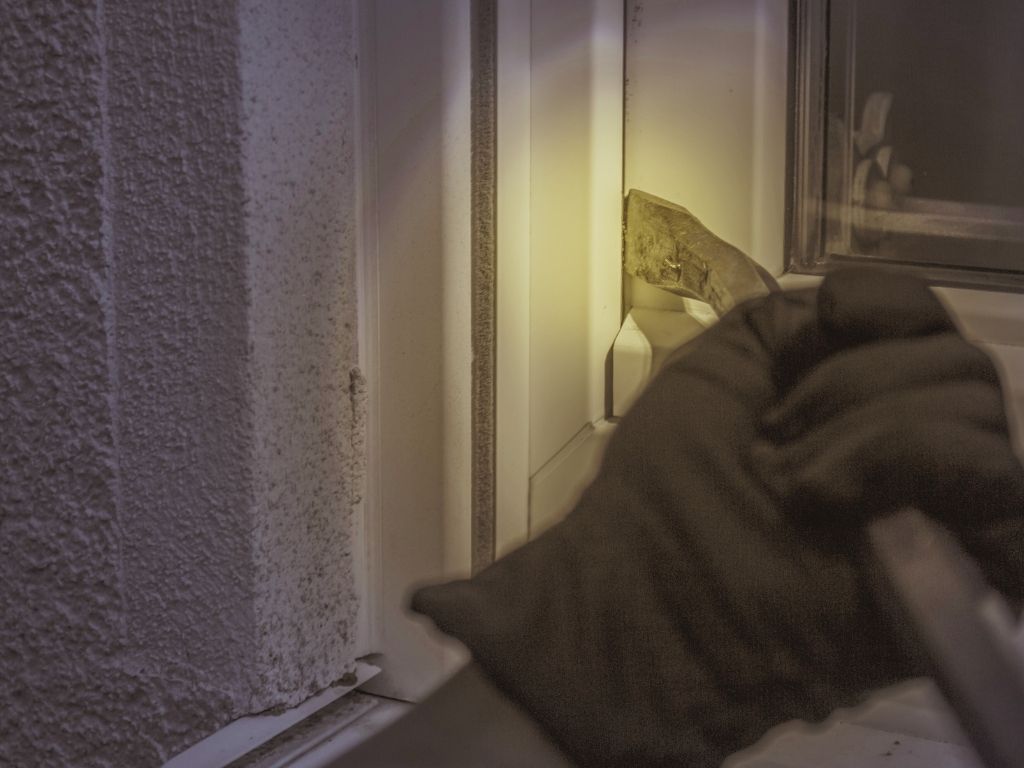
- 01708 453168
- info@atcl.co.uk
- Office Hours: Mon - Sat: 7:30 - 17:30
- 24hr Emergency Callout

Garages don’t always feel like part of the home. They’re sometimes seen as storage space, or just somewhere to keep the car. But if a garage is easy to get into, it can also become a quiet way into your house.
In many cases, it’s not even difficult. A door might be left unlocked, a remote left in the car, or a release cord left exposed. These things don’t always seem like a big deal, but they’re exactly what burglars look for.
In this post, we’ll look at the main ways thieves break into garages, and some easy ways to make yours safer, without needing a moat or guard dog.
Many garage break-ins don’t involve much effort. Often, someone will walk around a neighbourhood looking for places where less care has been taken. If something looks quick to enter, it might be tried.
Here are some of the more common methods:
Most electric or motorised garage doors have a cord inside that lets you open the door by hand if the power cuts out. With a wire or hook, that cord can be pulled from the outside, usually by slipping it through the top of the door.
Think of it like pulling a fire alarm from outside – not ideal if you’re trying to keep things secure.
We were recently called out to a property where the side door had been popped open using a flathead screwdriver. The lock had never been replaced since the house was built in the early 2000s, which was obvious from the avocado-coloured paintwork.
Sometimes, it’s not about cleverness, it’s just about force. If a garage door or side entry is weak, a determined intruder might just kick, pry, or ram their way in.
Older doors, thin panels, or loose frames are more vulnerable. Reinforcing doors and frames, and installing solid-core doors, can help resist this kind of entry.
If the garage remote is kept inside the car, and the car is parked outside, it might be taken. A thief doesn’t need much time to get in and grab it.
Leaving it in the visor is like gift-wrapping the front door key and leaving it on the dashboard.
If tools, bikes or other equipment can be seen through a window, a garage becomes more of a target. What’s inside will often affect whether a break-in is attempted.
In some houses, the garage leads directly into the kitchen or hallway. If the connecting door isn’t locked or reinforced, a criminal in the garage may be just a few steps from the main living room. It’s well worth upgrading the internal door lock if you believe it’s not suitable.
In several homes across our area, we’ve seen standard garage door locks that no longer line up properly due to years of wear. At that point, the door’s more decorative than defensive.
At the very least, it stops the cat setting off your imagination every time it strolls past at 2am.
Not every garage needs an alarm system. But there are a few extras you can consider, depending on what you store inside and where your garage is placed:
→ For help with adding physical reinforcements like locks or bolts, you could also get advice from a trusted garage locksmith who knows what works best.
Some garages only hold tools and bikes. Others store valuable garden equipment or extra fridges. And sometimes, the garage is simply used to get into the house.
If someone is able to enter the garage without being noticed, they may have more time than usual. Especially if the space is at the back of the house or not overlooked by neighbours.
In most cases, it’s not about locking everything down completely. It’s about removing the easy ways in, and maybe not leaving your power tools on full display under a window.
It’s easy to forget about garage security. Other parts of the home often get more attention. But garages can be one of the first places someone will try.
That doesn’t mean everything needs to be changed or upgraded. In most cases, just a few adjustments can make a real difference.
Things like:
These small steps make it harder for someone to break in without being seen or heard. And that’s usually enough to make them leave it alone.
Many of the most common problems can be sorted quite easily. If you’re not sure where to start, we’re happy to give honest advice based on your garage type and setup. You don’t need to book anything, just ask.
EXCELLENTTrustindex verifies that the original source of the review is Google. Lovely young chap (Dan Payne) came this morning to change my elderly mother's locks. He was polite, helpful and swift. Did the job to a high standard. Will use the company again. Thank you!Posted onTrustindex verifies that the original source of the review is Google. Fantastic service! Dan came to change a lock, arrived early which I was really happy about and he was very polite on arrival. Super professional, changed the lock in no time and left no mess. Would definitely recommend 👍Posted onTrustindex verifies that the original source of the review is Google. one of the locksmiths (didn’t get the name) came and swapped out my lock today having called my council yesterday evening, they rang and I wasn’t home but they waited for me to get back. They were lovely and he was very quick so thank you.Posted onTrustindex verifies that the original source of the review is Google. Excellent service, got here in 20 minutes, had the front door open in less than 30 seconds! Thank you!Posted onTrustindex verifies that the original source of the review is Google. I have just used Around The Clock Locks (ATCL) Locksmiths and they are very professional, affordable and brilliant. They have resolved my French door lock issue within minutes and explained everything clearly. They came right on time and only start the job once we agreed the price which was very competitive. I appreciate their honesty also. I whole heartedly recommend ATCLPosted onTrustindex verifies that the original source of the review is Google. Amazing service, reasonably priced and helped me with a few other niggles I had in the property. Would highly recommendPosted onTrustindex verifies that the original source of the review is Google. Really responsive, friendly service, great work every time. Many thanksPosted onTrustindex verifies that the original source of the review is Google. I had a problem with the locks in my flat, after getting quotes from two other locksmiths, ACTL turned out to be the most responsive and reasonably priced by far. They replaced the locks (and door handle) quickly. Everything looks and works perfectly now. I also REALLY appreciated that all communication could be handled via email - no unnecessary phone calls, which was a hassle with other companies.Posted onTrustindex verifies that the original source of the review is Google. Amazing. Oliver arrived within 10 mins of my call and got my into my home quickly. He also kindly helped with a separate issue with my door. Highly recommended. Thanks so much